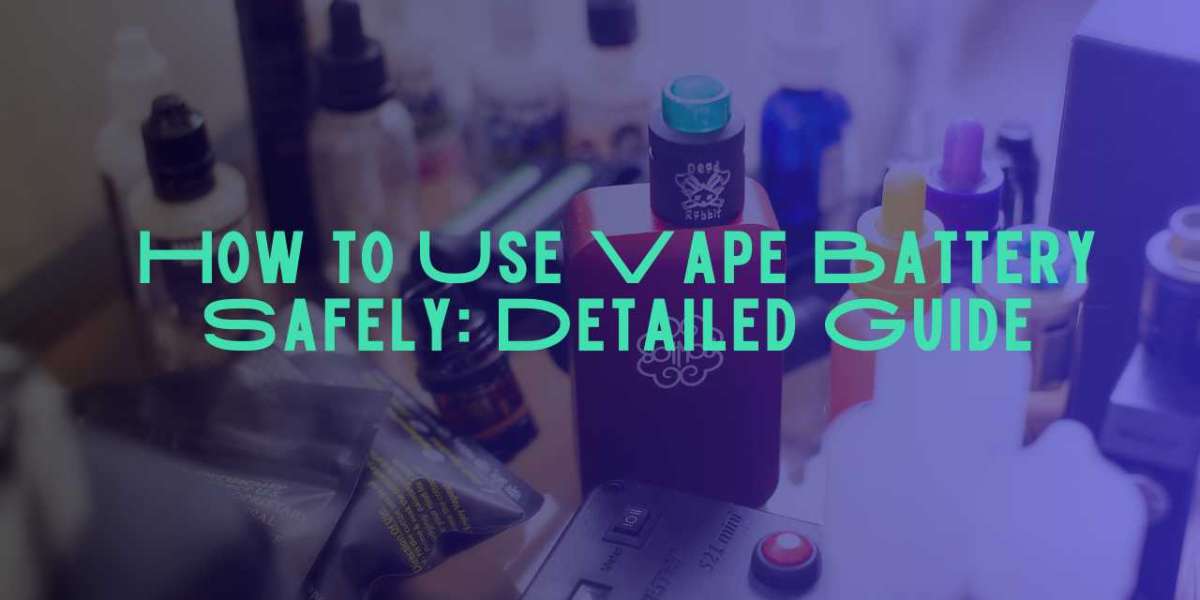Introduction
Vaping has become increasingly popular over the years, but with this rise comes the necessity to understand and practice vape battery safety. Ensuring the safe usage of vape batteries is crucial not only for the longevity of your device but also for your personal safety. This comprehensive guide will walk you through everything you need to know about using vape batteries safely.
Understanding Vape Batteries
Types of Vape Batteries
Vape batteries come in various types, each with its unique characteristics. The most common types are:
- Lithium-ion Batteries: Widely used due to their high energy density and long life.
- Lithium-polymer Batteries: Known for their flexibility in shape and lighter weight.
- Internal Batteries: Built into the device and charged via a USB port.
- External Batteries: Removable and replaceable, offering more flexibility and power.
Common Terminologies
- mAh (Milliamp Hours): A measure of battery capacity.
- Voltage: The electrical potential difference.
- Wattage: A measure of electrical power.
- Amperage: The strength of the electrical current.
Choosing the Right Vape Battery
Battery Capacity
When selecting a vape battery, consider its capacity, typically measured in milliamp hours (mAh). A higher mAh rating means longer battery life, allowing you to vape for extended periods without recharging.
Voltage and Wattage
Understanding the voltage and wattage requirements of your device is essential. Ensure that the battery you choose can handle the voltage and wattage output needed for your favorite vaping device to function correctly.
Battery Safety Basics
Manufacturer Guidelines
Always adhere to the guidelines provided by the manufacturer. These instructions are tailored to ensure the safe and optimal performance of your vape battery.
Recognizing Authentic Batteries
Counterfeit batteries can pose significant safety risks. Purchase batteries from reputable sources to ensure authenticity and reliability.
Proper Charging Practices
Using the Right Charger
Use the charger recommended by the battery manufacturer. Avoid using chargers from different brands or models, as this can lead to overcharging or other safety issues.
Avoiding Overcharging
Overcharging a vape battery can cause it to overheat and potentially fail. Remove the battery from the charger once it is fully charged to prevent overcharging.
Handling and Storage of Vape Batteries
Safe Storage Techniques
Store your vape batteries in a cool, dry place. Avoid exposing them to extreme temperatures or direct sunlight.
Transportation Tips
When transporting vape batteries, use a protective case to prevent accidental contact with metal objects, which could cause a short circuit.
Avoiding Common Mistakes
Using Damaged Batteries
Never use a damaged battery. If you notice any dents, tears, or other signs of damage, replace the battery immediately to avoid safety hazards.
Mixing Batteries
Avoid mixing batteries of different brands, capacities, or charge levels. This can lead to uneven performance and potential safety issues.
Signs of Battery Issues
Identifying a Failing Battery
Be aware of signs that indicate a battery is failing, such as a significant decrease in battery life, overheating, or unusual noises. If you notice any of these signs, discontinue use immediately.
Immediate Actions to Take
If you suspect your battery is failing, remove it from your device and place it in a safe, non-flammable location. Consider replacing the battery to avoid potential hazards.
Battery Maintenance
Regular Inspections
Regularly inspect your batteries for signs of wear and tear. Look for any damage or irregularities that could indicate a problem.
Cleaning Tips
Keep your batteries clean by wiping them down with a dry cloth. Avoid using water or cleaning agents, as these can damage the battery.
Disposing of Vape Batteries
Environmental Considerations
Vape batteries contain materials that can be harmful to the environment. Proper disposal is essential to minimize environmental impact.
Proper Disposal Methods
Dispose of vape batteries at designated recycling centers or battery disposal facilities. Avoid throwing them in the trash.
Traveling with Vape Batteries
Airline Regulations
Many airlines have specific regulations regarding the transport of vape batteries. Check with your airline before traveling to ensure compliance with their rules.
Safety Tips for Travelers
When traveling with vape batteries, keep them in your carry-on luggage rather than checked baggage. Use a protective case to prevent damage and short circuits.
Legal Considerations
Local Laws and Regulations
Be aware of local laws and regulations regarding vape batteries. These can vary significantly between regions and may impact how you use and transport your batteries.
Understanding Battery Restrictions
Some areas have specific restrictions on the types and capacities of batteries that can be used. Familiarize yourself with these restrictions to avoid legal issues.
Emergency Situations
Handling Battery Leaks
If your battery leaks, handle it with care. Wear gloves and avoid direct contact with the leaking material. Dispose of the battery according to local regulations.
Fire Safety Measures
In the event of a battery fire, use a fire extinguisher designed for electrical fires. Do not use water, as this can worsen the situation.
FAQs
1. How long should I charge my vape battery?
Typically, you should charge your vape battery until it reaches full capacity, which usually takes a few hours. Refer to the manufacturer's guidelines for specific charging times.
2. Can I leave my vape battery charging overnight?
It is not recommended to leave your vape battery charging overnight. Overcharging can cause the battery to overheat and potentially fail.
3. How often should I replace my vape battery?
Replace your vape battery when you notice a significant decrease in performance or if it shows signs of damage. On average, vape batteries last about 6-12 months.
4. Is it safe to carry spare vape batteries in my pocket?
No, it is not safe to carry spare vape batteries in your pocket. They can come into contact with metal objects and cause a short circuit. Use a protective case instead.
5. What should I do if my vape battery gets wet?
If your vape battery gets wet, discontinue use immediately. Dry it thoroughly and check for any signs of damage before attempting to use it again.
Conclusion
Vape battery safety is paramount to ensure a safe and enjoyable vaping experience. By understanding the types of batteries, following proper charging and handling practices, and being aware of potential issues, you can significantly reduce the risk of battery-related accidents. Remember to regularly inspect your batteries, dispose of them properly, and stay informed about local regulations. Safe vaping!








